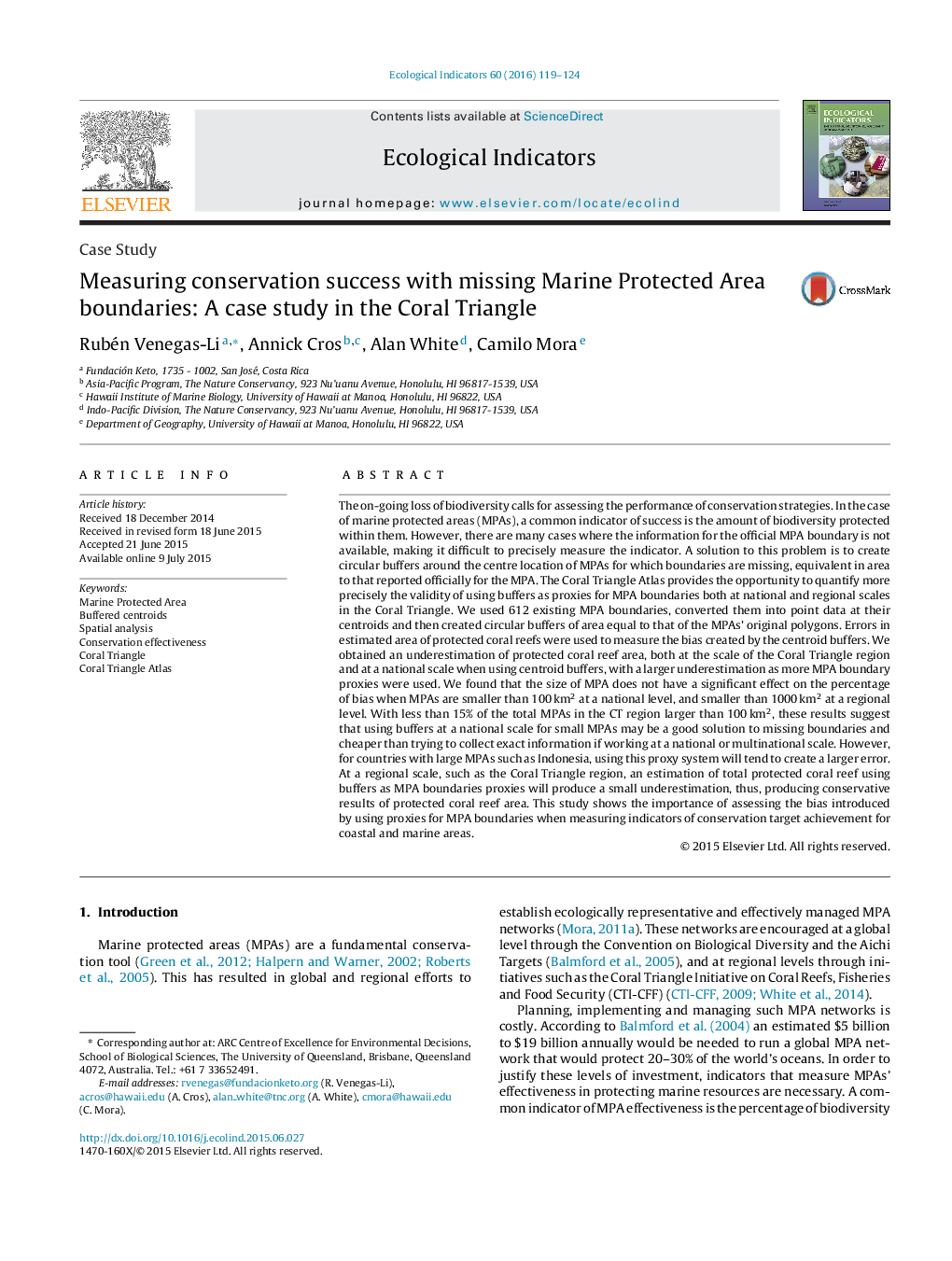| کد مقاله | کد نشریه | سال انتشار | مقاله انگلیسی | نسخه تمام متن |
|---|---|---|---|---|
| 6293998 | 1617141 | 2016 | 6 صفحه PDF | دانلود رایگان |
- MPA centroids were buffered to test their efficiency as MPA boundary proxies.
- We used the Coral Triangle as a study region due to its conservation initiatives.
- Protected coral reef area is underestimated when buffers are used as proxies.
- At a regional scale, buffers are good proxies for missing boundaries of <1000Â km2.
- At a national scale, buffers are good proxies for small MPAs.
The on-going loss of biodiversity calls for assessing the performance of conservation strategies. In the case of marine protected areas (MPAs), a common indicator of success is the amount of biodiversity protected within them. However, there are many cases where the information for the official MPA boundary is not available, making it difficult to precisely measure the indicator. A solution to this problem is to create circular buffers around the centre location of MPAs for which boundaries are missing, equivalent in area to that reported officially for the MPA. The Coral Triangle Atlas provides the opportunity to quantify more precisely the validity of using buffers as proxies for MPA boundaries both at national and regional scales in the Coral Triangle. We used 612 existing MPA boundaries, converted them into point data at their centroids and then created circular buffers of area equal to that of the MPAs' original polygons. Errors in estimated area of protected coral reefs were used to measure the bias created by the centroid buffers. We obtained an underestimation of protected coral reef area, both at the scale of the Coral Triangle region and at a national scale when using centroid buffers, with a larger underestimation as more MPA boundary proxies were used. We found that the size of MPA does not have a significant effect on the percentage of bias when MPAs are smaller than 100Â km2 at a national level, and smaller than 1000Â km2 at a regional level. With less than 15% of the total MPAs in the CT region larger than 100Â km2, these results suggest that using buffers at a national scale for small MPAs may be a good solution to missing boundaries and cheaper than trying to collect exact information if working at a national or multinational scale. However, for countries with large MPAs such as Indonesia, using this proxy system will tend to create a larger error. At a regional scale, such as the Coral Triangle region, an estimation of total protected coral reef using buffers as MPA boundaries proxies will produce a small underestimation, thus, producing conservative results of protected coral reef area. This study shows the importance of assessing the bias introduced by using proxies for MPA boundaries when measuring indicators of conservation target achievement for coastal and marine areas.
Journal: Ecological Indicators - Volume 60, January 2016, Pages 119-124
